Testimony on the National Governors’ Association Proposal on Medicaid – Chart Pack
National Governors Association Proposal on Medicaid
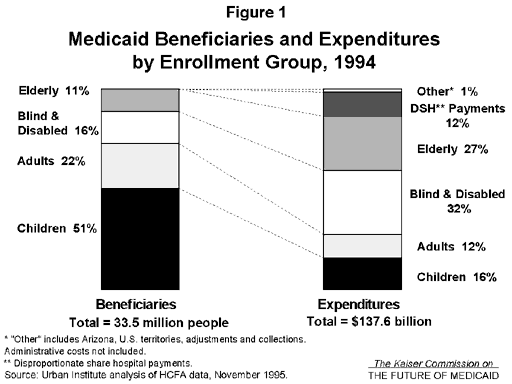

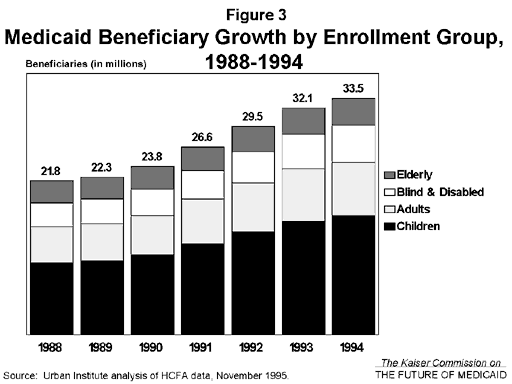
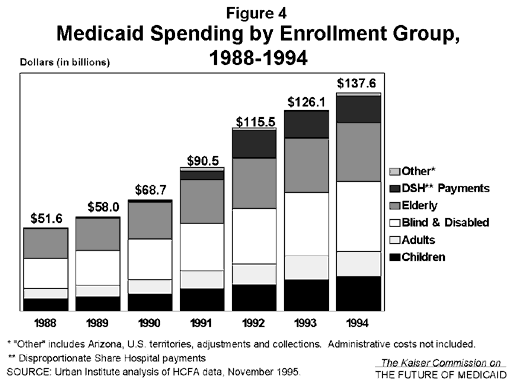
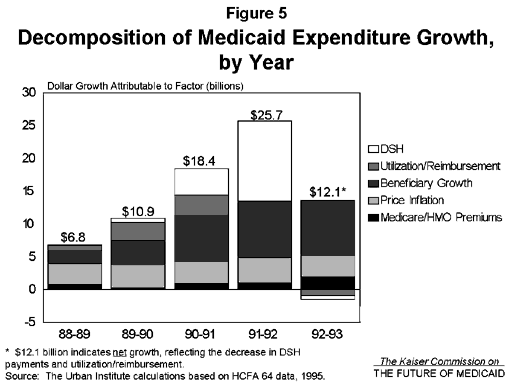
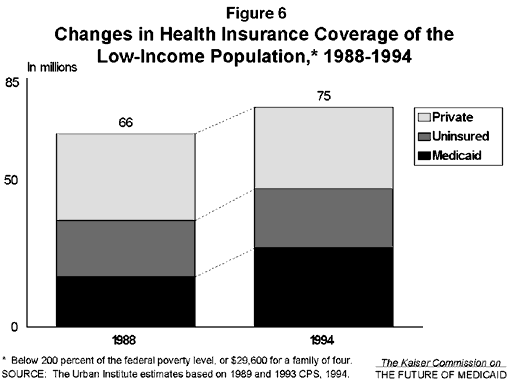
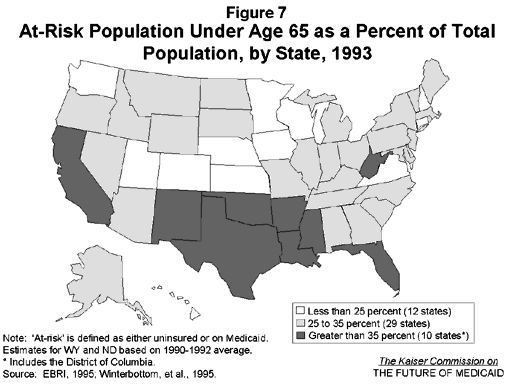
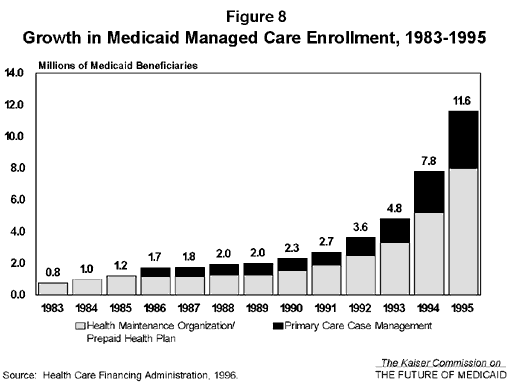
National Governors Association Proposal on Medicaid:Report Chart Pack
The independent source for health policy research, polling, and news.
National Governors Association Proposal on Medicaid








National Governors Association Proposal on Medicaid:Report Chart Pack
This Washington Post/Kaiser/Harvard survey examines public understanding, perceptions, and attitudes about the role of government and public mistrust. Articles as part of this series by The Washington Post ran from Sunday January 28, 1996 through February 4, 1996.
Q4a. Thinking about where you get information about contraceptionand birth control, was your physician a major source, minor sourceor not a source at all of information about contraception/birthcontrol for you? (Rotate)
NationalMenWomenMajor source 48% 32% 64% Minor source 17% 19% 15% Not a source at all 32% 46% 19% Don’t know 2% 2% * Don’t know 1% 1% * Q4b. Thinking about where you get information about contraceptionand birth control, was nurse or other health professional a majorsource, minor source or not a source at all of information aboutcontraception/birth control for you? (Rotate)
NationalMenWomenMajor source 34% 27% 42% Minor source 23% 24% 23% Not a source at all 39% 46% 32% Don’t know 2% 2% 2% Refused/No answer 1% 1% 1% Q4c. Thinking about where you get information about contraceptionand birth control, was “Women’s or “Men’s magazinesa major source, minor source or not a source at all of informationabout contraception/birth control for you? (Rotate)
NationalMenWomenMajor source 10% 10% 11% Minor source 26% 26% 25% Not a source at all 61% 61% 62% Don’t know 2% 3% 2% Refused/No answer 1% 1% * Q4d. Thinking about where you get information about contraceptionand birth control, was print news like a daily newspaper or weeklynews magazine a major source, minor source or not a source atall of information about contraception/birth control for you?
NationalMenWomenMajor source 13% 15% 11% Minor source 28% 30% 25% Not a source at all 56% 51% 62% Don’t know 2% 3% 2% Refused/No answer 1% 1% * Q4e. Thinking about where you get information about contraceptionand birth control, was television news a major source, minor sourceor not a source at all of information about contraception/birthcontrol for you? (Rotate)
NationalMenWomenMajor source 15% 19% 12% Minor source 33% 34% 31% Not a source at all 49% 43% 55% Don’t know 2% 3% 2% Refused/No answer 1% 1% * Q4f. Thinking about where you get information about contraceptionand birth control, was your friends and family a major source,minor source or not a source at all of information about contraception/birthcontrol for you? (Rotate)
NationalMenWomenMajor source 20% 20% 19% Minor source 31% 30% 32% Not a source at all 46% 46% 47% Don’t know 2% 3% 2% Refused/No answer 1% 1% * Q4g. Thinking about where you get information about contraceptionand birth control, was an advertisement for a specific methodof birth control a major source, minor source or not a sourceat all of information about contraception/birth control for you?(Rotate)
NationalMenWomenMajor source 12% 11% 13% Minor source 27% 29% 24% Not a source at all 58% 56% 60% Don’t know 3% 3% 3% Refused/No answer 1% 1% * Q5. Which one of these sources would you say you refer to mostoften as a source of information about contraception/birth controlover the course of a year?
NationalMenWomenYour physician 38% 25% 51% Nurse or other health professional 12% 10% 14% Your friends and family 10% 13% 7% Television news 10% 16% 4% Print news like a daily newspaper or weekly news magazine 8% 12% 4% “Women’s” or “Mens” magazines 9% 7% 4% An advertisement for a specific method of birth control 1% 2% 1% Don’t know 8% 8% 8% Refused/No answer 6% 7% 5% Q6. Within the last two months, have you heard about new researchregarding the health effects of birth control pills?
NationalMenWomenYes 10% 10% 10% No 88% 88% 89% Don’t know 1% 2% * Refused/No answer * * * Q7. Did hearing this information cause you or your partner todo any of the following things or not (Rotate)?
NationalMenWomenSeek additional information about health effects of birth control pills 14% 11% 17% Discontinue using birth control pills 4% 5% 3% Decide to start using birth control pills 3% 4% 2% I is not applicable to me 44% 37% 51% None of the above 42% 52% 32% Refused/No answer 3% 3% 2% Q8. Do you [for men, Does you partner] currently use birthcontrol pills? Yes, no, or not applicable?
NationalMenWomenYes 11% 12% 11% No 82% 78% 86% Not applicable 6% 9% * Don’t know 1% 1% * Refused/No answer 1% 1% 1% Q9a. Have you ever used birth control pills? Yes, no,or not applicable?
NationalMenWomenYes 60% – 51% No 39% – 47% Not applicable 1% – 1% Don’t know * – * Refused/No answer 1% – 1% Q9b. Has your current or most recent partner ever used birth controlpills? Yes, no, or not applicable?
NationalMenWomenYes 46% 46% – No 44% 44% – Not applicable 5% 5% – Don’t know 4% 4% – Refused/No answer 1% 1% – Q10. How much influence did your partner have in the decisionto use birth control pills? Would you say…
NationalMenWomenA lot 45% 76% 21% Some 14% 10% 16% Only a little, or 8% 6% 10% None 32% 6% 52% Don’t know 1% 2% * Refused/No answer * 1% –
95-1773A-01a
National Survey on Public Perceptions about Contraception:Press Release Survey Part One Part Two Fact Sheet Q & A Resource List
A national random-sample telephone survey conducted between January 19-21, 1996 on Americans perceptions of the risks and benefits associated with oral contraceptives, or The Pill. The survey finds that many American men and women have at least some concerns about the safety of oral contraceptives. These findings were presented at a briefing in New York on January 31, 1996, co-sponsored by Kaiser Family Foundation, the National Press Foundation and The Alan Guttmacher Institute.
Perceptions and Reality: How Safe Is the Pill? The Role of the Media, Healthcare Providers, and the Pharmaceutical Industry in Shaping American Women’ A fact sheet, Q&A and resource list prepared for a media briefing that focused on public perceptions and knowledge of the safety of birth control pills compared with the real facts about the risks and benefits. In addition, the program addressed how new information about the health effects of contraception is communicated to the public.
This report compares the provisions designed to guard against risk selection among the Medicare population in both the Congressional Balanced Budget Act of 1995 and in the President’s budget plan released in December 1995. The report also explores provisions in both that may exacerbate the potential for risk selection.
Talking With Kids About Tough Issues is a national campaign to support parents by Children Now and the Henry J. Kaiser Family Foundation. This guide for parents offers practical, concrete tips and techniques for talking easily and openly with young children ages 8 to 12 about tough issues: sex, HIV/AIDS, violence, drugs and alcohol.
More about the campaign: Talk With Your Kids…before everyone else does
The Four Americas: Government and Social Policy Through the Eyes of America’s Multi-racial and Multi-ethnic Society
This report is the first of a series of surveys conducted jointly by The Washington Post/Kaiser Family Foundation/Harvard University examining public knowledge, values and beliefs on major issues and challenges facing our nation, such as race, poverty, reducing the deficit, the role of government in our society, and our nation’s obligations in the world. The hope is that this initiative will contribute to a better understanding of public knowledge and perspectives on these important issues, and to more effective efforts by the media to educate, inform, and engage citizens in national debates.
This first survey focused on how the perspectives of different racial and ethnic groups shaped their attitudes toward social policy and the role of government in America. A reprint of the series as it appeared in The Washington Post October 8-11, 1995 is also available (#1098), and also is included in this report.
The Impact of the “Medigrant” Plan on the Federal Payments to States
The analysis examines the conference agreement plan for the redistribution of federal funds under a block grant for the Medicaid program. It also discusses the implications of the reductions in federal spending for beneficiary coverage.
Public Attitudes Toward Welfare and Reform: A Focus Group Report
This focus group report provides further insight on some of the findings from a nationwide survey on welfare released by the Kaiser Family Foundation in March 1995 (#1045). This survey suggests that citizens are more concerned with the moral underpinnings of the current welfare system than with the amount of tax money used for the program, and found participant agreement on the importance of job training, education and child care programs.